Read The
Current Issue
Over the Mountains and through the Woods
Teton Pass might be the most unique commute in the country.
By Molly Absolon
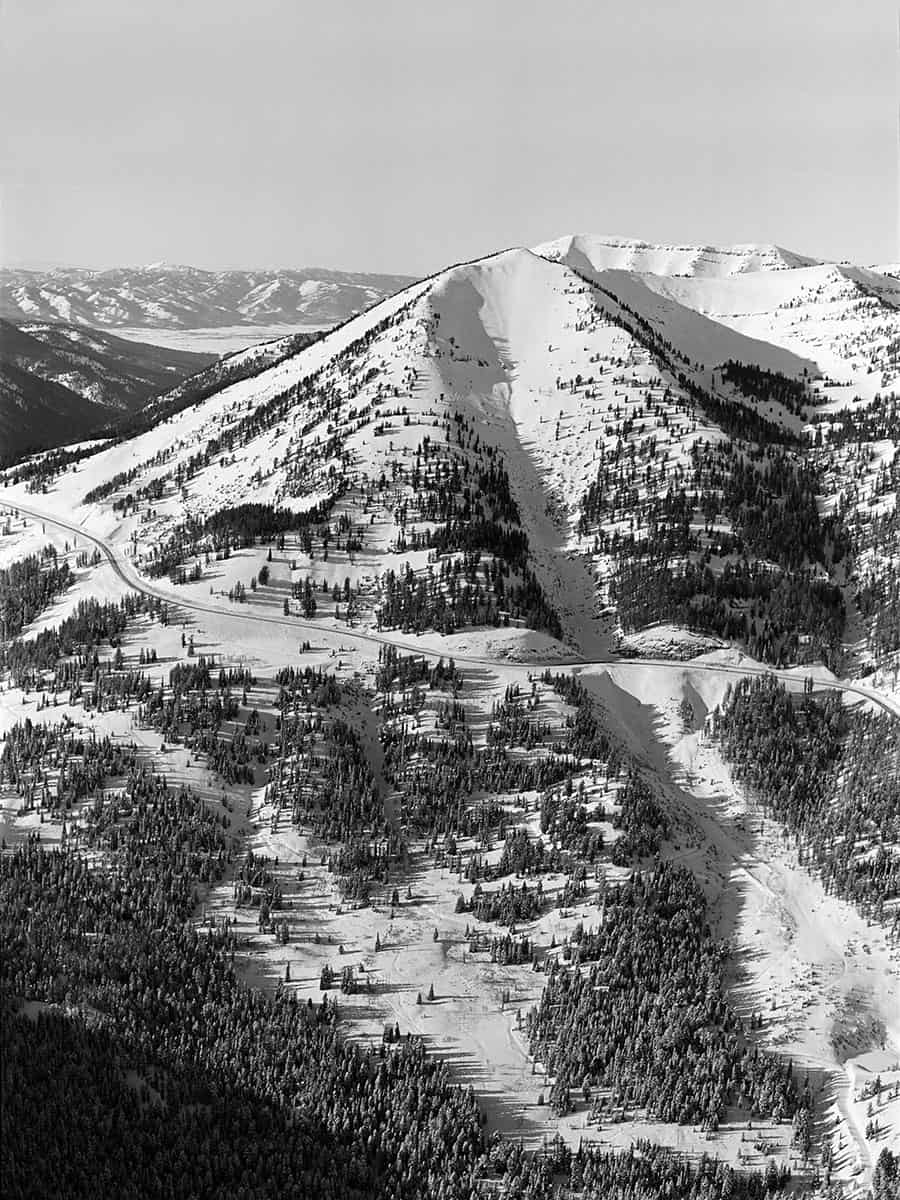
WIND WHIPS ACROSS the road, swirling the snow and whiting out everything. It looks like the inside of a ping-pong ball, and, without the glint of a taillight ahead, it’s impossible to tell what’s up or down, or even where the road is. Still, a line of traffic creeps its way forward, headlights closely following taillights. Welcome to rush hour on Teton Pass.
Most people driving the Pass—always a capital P—are traveling between their homes in Teton Valley, Idaho, and their jobs in Jackson. (People choose to live in Teton Valley because it has a very different community feel from Jackson Hole, and also because real estate is more affordable than it is in Jackson.) These workers have either one of the most beautiful, exciting commutes in the country, or one of the most stressful and potentially dangerous. Sometimes, especially in winter, it’s both of these simultaneously.
While it’s twenty-four miles on Highway 22 between the Town Square and Victor, Idaho, it’s the eleven-mile stretch between Wilson, Wyoming, and the Idaho state line that is this commute’s heart and biggest challenge: Teton Pass. The Pass, which is one lane in each direction, switchbacks up and down 2,200 feet at grades of up to 10 percent. Along the way it runs beneath sixteen avalanche paths. Slides ripping down these paths have traveled up to 130 mph and piled snow as much as thirty feet deep on the road.
“Red Mountain Pass in Colorado is probably the most dangerous road in the country,” says Jamie Yount, who, from 2002 until this past summer, was an avalanche technician with the Wyoming Department of Transportation (WYDOT), which is responsible for maintaining the Pass. “But [Red Mountain] sees only fifty to one hundred cars a day. We average 5,000.”
HIGHWAY 22 IS not the only route between Teton Valley and Jackson Hole, but it is the shortest. On a good day, this drive takes about thirty-five minutes; on a bad day, it can take over an hour. On a really bad day, the drive is literally impossible: WYDOT closes the road based on weather conditions and/or to do avalanche mitigation. When this happens, commuters’ only option is to drive south through the Snake River Canyon to Alpine and then up Swan Valley, and then up and over Pine Creek Pass, a much smaller and shorter pass than Teton Pass. The route is eighty-seven miles but, in the type of weather conditions that would close Teton Pass, takes between two and three hours. This drive has its own dangers—the Snake River Canyon actually has more avalanche paths than the Pass and is also sometimes closed by WYDOT for safety reasons.
The time and cost of keeping Teton Pass open in the winter have risen steadily in the past five years. In 2013, the effort required 4,913 man-hours and $421,950; in 2016, those numbers increased to 6,068 man-hours and $782,035. Despite the big winter of 2017, costs were slightly down—5,206 man-hours and $588,256. Still, overall the trend continues to be upward.
Yet even these amounts of money, expertise, and effort don’t guarantee WYDOT wins against Mother Nature. Last February, weather and avalanches closed the Pass for five days in a row. Over these five days, forty inches of heavy, wet snow fell while winds gusted up to 80 mph. Thirteen avalanches reached the Pass. The debris from these slides was up to thirty feet deep and covered as much as 200 feet of road. Five of these thirteen slides were in places that were never known to have slid before.
And that wasn’t the only time the Pass closed last winter. Over the entire season, weather and avalanches shut down the road on twenty different occasions. Most closures lasted a couple of hours. The five-day February closure was the longest stretch the road was closed in recent memory.
There is middle ground between the Pass being closed and it being an easy drive: the chain law. WYDOT puts this law, which requires two-wheel-drive cars to use chains or get a ticket, temporarily into effect when snow, ice, or other hazardous winter conditions can cause skidding or sliding. There is a chain law on the Pass about eighty times every winter.
KEEPING THE PASS open isn’t important merely for convenience. Only three of the twenty-three deputies at the Teton County Sheriff’s Office live in Jackson. The rest commute, with about half of them driving over the Pass. Nineteen of the Jackson Police Department’s thirty-one sworn officers drive from Idaho (the Pass) or Lincoln and Sublette Counties (the Snake River Canyon). About one-third of St. John’s Medical Center’s employees commute over the Pass. During the five-day February Pass closure (the Snake River Canyon was also closed), hospital staff on this side of the Pass pulled extra shifts. Overall, 47 percent of Jackson Hole’s critical employees, including teachers, first responders, firefighters, and medical staff, live outside this valley.
When the Pass is closed, it costs Jackson Hole’s economy.
The exact numbers for the February storm are not clear. Yount has said that closing the Pass for one hour results in $8,000 to $10,000 of lost economic revenue; a five-day closure would then cost at least $500,000.
Learning the lengths WYDOT goes to mitigating avalanches and the economic importance of keeping the road open, you’d be correct in wondering if there is a better way. “We’ve looked at a few things over the years,” says Keith Compton, the District 3 engineer for WYDOT. “A number of years back—thirty, maybe more—we had a contract to build a bridge across Glory Bowl so avalanches would flow underneath the road.” Construction of this bridge was almost complete when Glory Bowl slid naturally. The bridge was destroyed like it was nothing more than Legos. WYDOT didn’t bother to rebuild.
The idea of tunnels and snow sheds has been tossed around for years and was again a hot topic of conversation last winter. These would protect the road from avalanches and keep traffic flowing during winter storm cycles. But the most recent figures for the cost of a tunnel exceed WYDOT’s entire annual budget. (A 1.4-mile tunnel beneath the Glory and Twin Slides paths, the two most active on the road, would cost about $265 million to build and $500,000 annually to maintain.) Given the current state of Wyoming’s economy, and the lack of public support for raising taxes, even if earmarked for infrastructure projects, it’s unlikely this will happen in the near future. Snow sheds are substantially less expensive—the latest estimate is between $20 million to $25 million for sheds protecting the road from Glory and Twin Slides—but that’s still a lot of money WYDOT doesn’t have. Further-more, Compton says snow sheds have a tendency to ice up and become hazardous, and he doesn’t think they are part of the solution here.
IT’S NOT ONLY commuters who rely on WYDOT maintaining the road. From the top of Teton Pass, skiers can easily access some of the country’s best backcountry skiing. (Backcountry skiing differs from resort skiing because skiers and snowboarders first climb to the top of what they ski.)
Mail carriers in the first decades of the twentieth century were the first people to ski the Pass. It was in the early 1940s, when Neil Rafferty installed a rope tow in Telemark Bowl just south of today’s top parking lot, that people began skiing the Pass for fun. It didn’t take long for Pass skiers to begin exploring areas beyond Rafferty’s rope tow and start backcountry skiing. The number of skiers on the Pass remained relatively low until the late 1990s. It was then that backcountry skiing equipment significantly improved—bindings got better and skis got lighter. In 2017, an estimated 70,000 backcountry runs were made from the top of Mt. Glory. When other areas of the Pass are considered—there is skiing to the south of the top parking lot and also from areas below the top on both the east and west sides—the number of ski runs is likely close to 100,000.
“Teton Pass is superunique,” says Yount, himself an avid backcountry skier. “You can drive to 12,000 feet on Loveland Pass [in Colorado], but there’s no bootpack there and the skiing is crap. You can drive up Little Cottonwood Canyon [in Utah] and get to good skiing, but the approach takes at least three hours.” Depending on your speed, the 1,800-foot bootpack to the top of Mt. Glory from the parking lot takes between thirty and ninety minutes. Once at the top of Glory, “There’s excellent skiing up there,” Yount says.
Some commuters, since they have to drive to the top of Teton Pass anyway, leave home early so they can park at the top, hike up Glory, and get in a ski before work. The local term for this is “dawn patrol.” “It is awesome being up [on Glory] before the sun comes up,” says Trevor Deighton, a science teacher at Jackson Hole Middle School who commutes daily over the Pass. “It’s a great way to start the day and show up energized for a day of teaching. There is a pretty regular crowd up there. The teacher crew is definitely the earliest, but on busy days there can be people waiting for your parking space at 7 a.m.!” Deighton says he averages three dawn patrols a week, but, when conditions have been good, has dawn-patrolled twelve days in a row.
Even though the top parking lot’s fifty-five parking spaces are sometimes full during dawn patrol, it’s even busier later. Head up around 10 a.m. on a powder day, and you might have to wait an hour to get a parking space.
THIS ASPECT OF commuting over Teton Pass can be as problematic as it is unique, though. In December 2016, an avalanche at the beginning of an evening rush hour caught a Jeep and pushed it off the road, trapping the driver and shutting the road overnight. Hundreds of commuters were stranded. The driver was uninjured, but avalanche debris packed the vehicle’s interior, and, when he was rescued, an imprint of his body was visible in the snow.
(The Jeep was destroyed.) According to WYDOT, it appeared a skier triggered this avalanche, though no one ever came forward to claim responsibility. The incident launched a community-wide outcry from commuters who claimed thoughtless skiers jeopardized their lives. It was only because of luck that the Jeep driver was OK.
Even though the backcountry skiing from Teton Pass is among the best in the country, the road’s purpose is not to provide access to recreation. Yount says, “[WYDOT’s] responsibility is to keep the highway safe. That’s our job, and we’re good at it. We take it seriously, and when people make our job harder, it can be frustrating.”
The day the Jeep was buried, the Bridger-Teton Avalanche Center (BTAC), a nonprofit that issues daily avalanche reports for areas in and around the Tetons including the Pass, rated the avalanche hazard as “high” based on the amount of new snow, temperatures, and wind, among other factors. (From least to most likely, the North American Public Avalanche Danger Scale ratings range from “low” to “extreme.” “High” is one rating below “extreme” and, according to the BTAC website jhavalanche.org, means “natural avalanches likely; human-triggered avalanches very likely.”) Yount says no one should have been skiing the steep terrain above the highway in such conditions. He thinks such behavior is, at the least, ignorant. At worst it is dangerous, both for the skier and for commuters on the road below. While building tunnels and snow sheds would cost tens of millions of dollars, limiting, or even prohibiting, skiing on the Pass wouldn’t cost WYDOT a thing. (In fact, it’d save them money since they’d no longer have to plow a parking lot at the top.)
IN 2006, A partnership between WYDOT, the Bridger-Teton National Forest (BTNF), and Friends of Pathways created the position of Teton Pass Ambassador to help ease some of the frustration and stress skiers can add. Jay Pistono, who began skiing the Pass in 1978, has been the ambassador since the position’s inception. Skiing the Pass is a privilege Pistono wants to preserve, but he does worry that too many users with a sense of entitlement could jeopardize its future.
“Some skiers want it both ways,” Pistono says. “They don’t want any regulations. They don’t want to be told what to do and where they can go, but then they want the parking areas plowed, Glory Bowl controlled, the road maintained. You can’t have it both ways. People think the Pass can’t be shut down [to skiing], but WYDOT can decide not to plow the parking areas and that effectively ends skiing up here.”
I joined Pistono for a few hours one afternoon last winter. He was working the parking lot at the top. It was the first sunny day in weeks, and the place was hopping. Cars waited in line for parking spots, and skiers who already had a spot readied their packs before darting across the road and starting the hike up Glory. It wasn’t yet rush hour, but a steady stream of traffic drove past. From the west side of the summit, skiers and boarders who had just finished a run on First or Second Turn walked up the side of the road. Cars that had picked up hitchhiking skiers at the bottom pulled into the parking lot to disgorge their passengers. I had difficulty keeping track of all that was going on. That no one was hit or fenders bumped seemed to me a matter of luck more than anything else.
“It’s just another day on Teton Pass,” Pistono says.
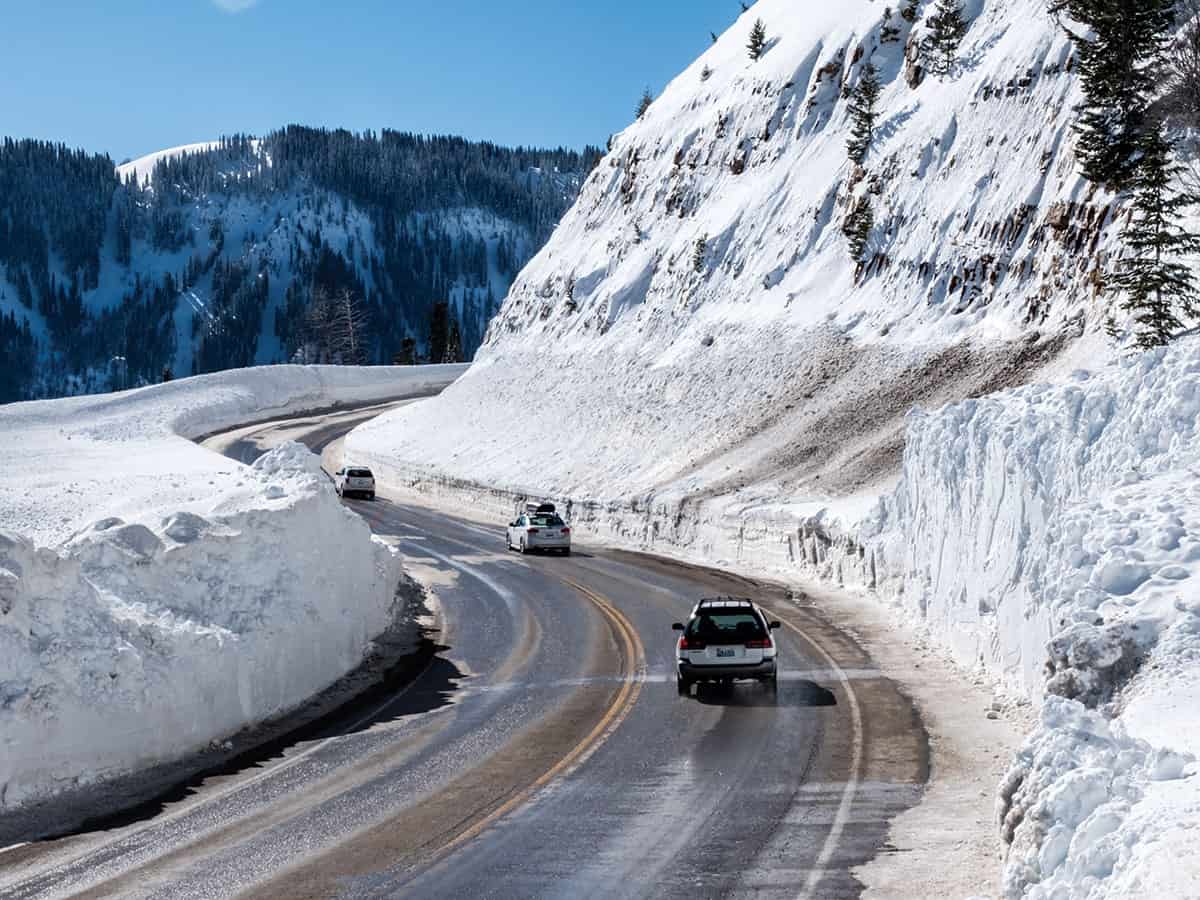
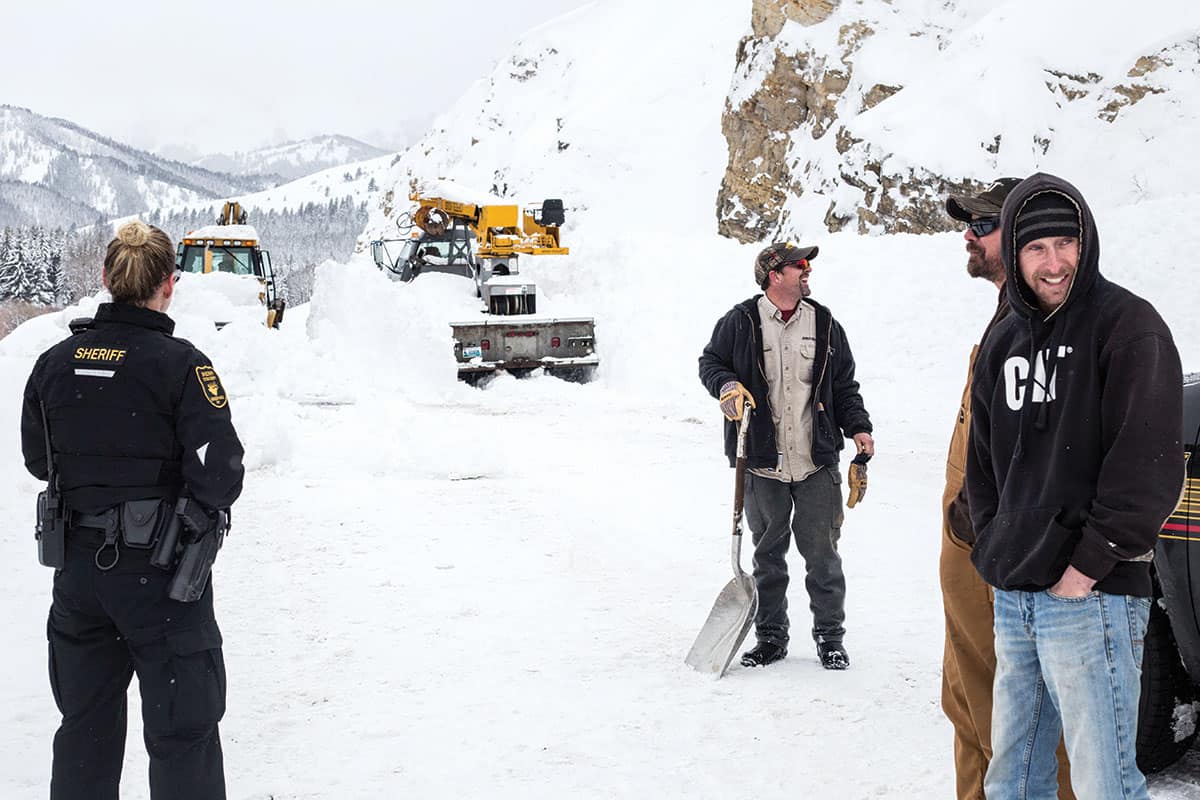
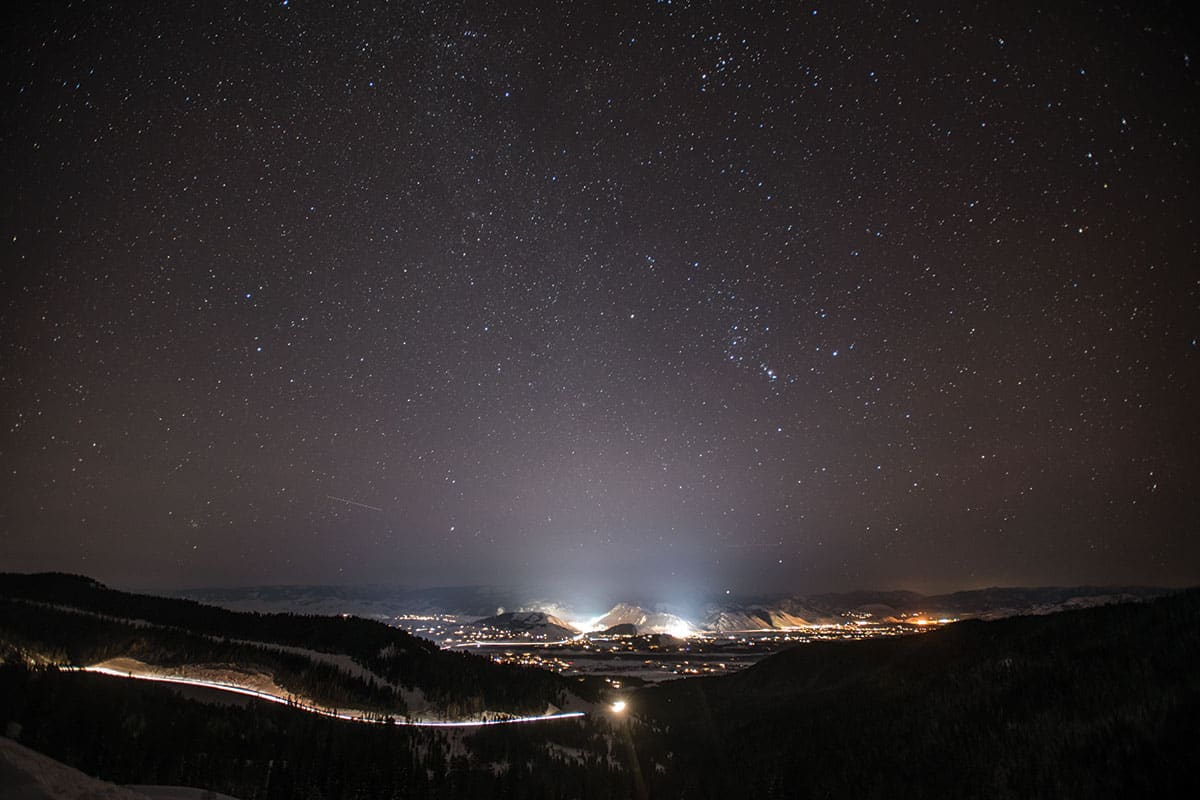
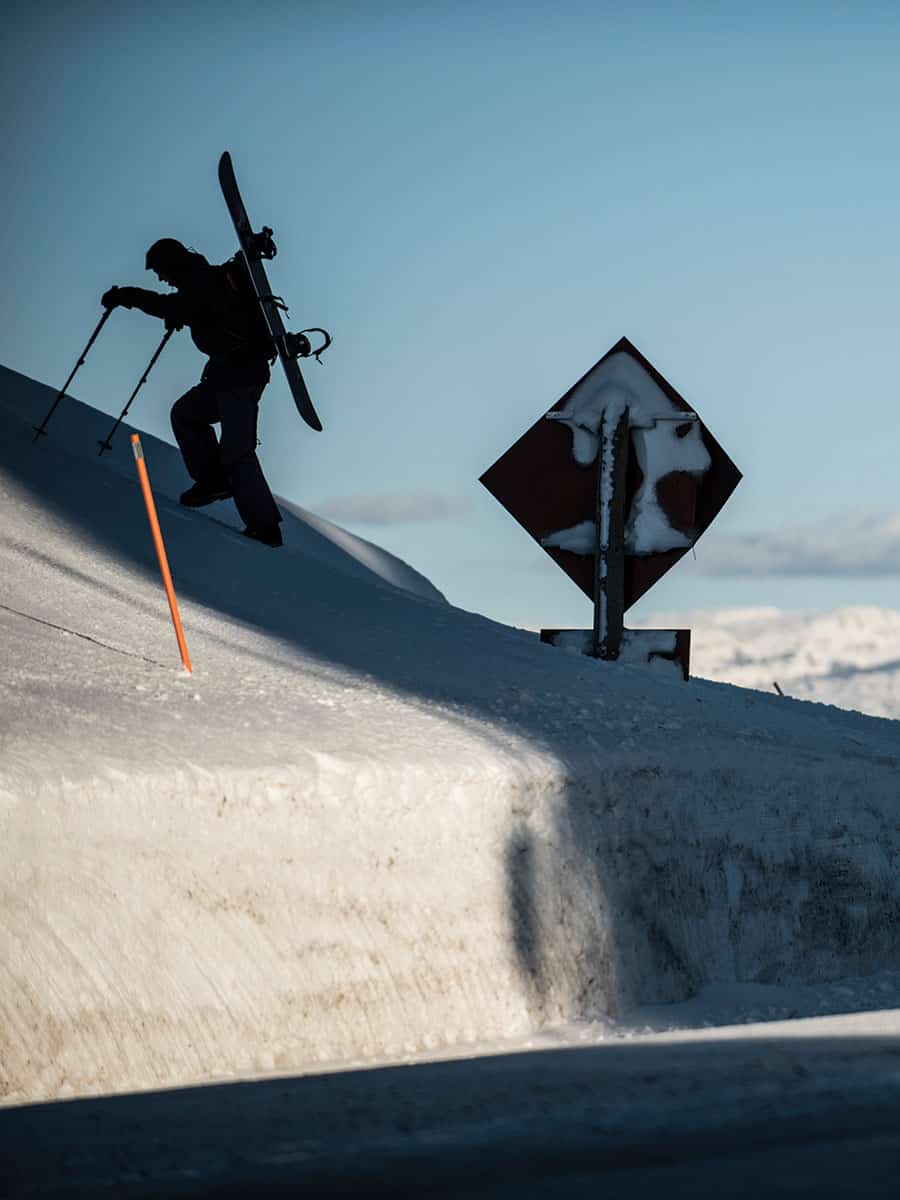
Pass History
Teton Pass has been an important travel corridor for humans for at least 10,000 years. Mountain men began using pre-existing Native American trails following this weakness in the Teton Range in the early 1800s. In 1886, the first horse-drawn wagon made it over the Pass. Settlers seeking to homestead in Jackson’s Hole soon followed with more wagons. For a family traveling with livestock, furniture, and supplies, the trip took up to two weeks. In 1913, the Old Pass Highway was built. The current road opened in 1969. (The original road is still in use, as a pathway for nonmotorized vehicles.)
Avalanche Control on Teton Pass
WYDOT’s weapon of choice for controlling avalanches on Teton Pass is a Swiss-made and -designed Gazex Remote Avalanche Control System. This system explodes an oxygen/propane gas mixture out of tubes at the top end of avalanche zones. There are four Gazex exploder tubes near the top of Glory Bowl and two near the head of Twin Slides. The force of the explosion is directed toward the snow, sending pressure and a shock wave deep into the snowpack. If it is unstable—i.e., likely to slide—this explosion will trigger an avalanche.
The concept behind purposefully triggering an avalanche is similar to that of a controlled burn: trigger a slide artificially at a time of WYDOT’s choosing (say, when they have a chance to close the Pass) to prevent a natural slide from randomly occurring—perhaps when commuters and skiers are in the area. Before a Gazex is detonated, WYDOT’s avalanche control technicians spend hours at their computers analyzing weather data for the area and also climb up to snow-study plots on the Pass to check conditions. Once they decide control work is necessary, a press release goes out warning of a pending closure.
To minimize the inconvenience to commuters, most control work is done in the early morning. If WYDOT detonates a Gazex at 3 a.m. that usually gives them enough time to clear the debris off the road from any resulting slides. And if the Gazex explosion doesn’t trigger a slide? WYDOT knows the snow is safe and no slides are imminent.




